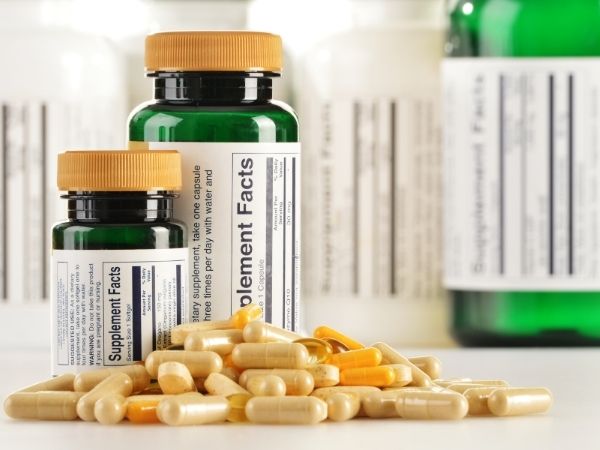Custom Packaging for Probiotic Supplements: A Guide for Dropshippers
Share
When it comes to supplements, few products are as sensitive — and as misunderstood — as probiotics. If you’re in the dropshipping game and looking to launch or scale your own private-label probiotic line, don’t make the mistake of treating packaging as an afterthought. With probiotics, packaging isn’t just about looks or logistics — it’s the invisible line between a functional product and a useless one.
Let’s walk through why packaging matters, which formats work in the real world, what functional materials you need to know, and how to build packaging that not only protects — but sells.

1. Why Packaging Isn’t Optional for Probiotic Supplements
Most supplements can survive heat, moisture, or poor shipping — but probiotics are living microorganisms. They die easily, quietly, and permanently. That’s why packaging isn’t just your outer shell; it’s your product’s second formulation.
The Hidden Decline of “Live Cultures”
When a bottle says “50 Billion CFUs,” it means 50 billion live, functional bacteria — but only if those bacteria survive the journey from factory to your customer’s digestive tract. And they won’t survive if exposed to moisture, oxygen, heat, or sunlight along the way.
A typical probiotic capsule in a plastic bottle might start with great numbers, but if there’s no desiccant in the cap or the seal is weak, by the time it reaches your customer, those billions might be down to a few million — or less. And the worst part? You’d never know by looking at it.
The Dropshipping Reality: You Can’t Afford Fragile Packaging
Most dropshippers don’t have climate-controlled warehouses or fast fulfillment centers. Your product might sit in a port warehouse for five days in 35°C heat. Or it might be squeezed into a container in a humid environment for weeks.
This isn’t rare. It’s typical.
So if your packaging can’t hold up under long, bumpy, hot, and humid conditions, then the CFUs you started with might not be the CFUs your customer consumes.
Trust Starts with the Box
We all know trust is currency in e-commerce — and for probiotics, packaging is often the first and only real-life touchpoint your customer has.
Is the label professional and informative? Is it sealed with something tamper-evident? These small things reassure people. Especially when they’re buying something they’ll actually ingest.
If you’re targeting pregnant women, children, or premium health buyers, your packaging must feel safe, clean, and thought-out — or they’ll click away, never to return.
And Yes, There Are Legal Stakes
In the US, EU, and Canada, you can’t just claim “50 Billion CFUs” and call it a day. You need to ensure that number still holds at the end of the shelf life — not just at the time of manufacture.
If your packaging doesn’t support that, and customers report degraded potency, platforms like Amazon may suspend your listing. Worse, you might face regulatory issues.
So when it comes to probiotics, packaging isn’t just protection — it’s legal protection, too.
2. Realistic Packaging Formats for Real Dropshipping Conditions
You’ve got your probiotic blend figured out. Now comes the question: how do you put it in the customer’s hands safely — and attractively?
Let’s cut through the theory and focus on what actually works.
Plastic Bottles (HDPE or PET): The Workhorse of the Industry
Most probiotics are shipped in opaque plastic bottles — and for good reason. They’re lightweight, durable, and easy to seal.
But not all bottles are created equal. What really matters is what’s inside the cap — a proper desiccant (built into the lid or added as a canister) is critical. And you must have an induction seal under the cap to prevent air and moisture entry.
If you’re selling large-count formats (like 90 capsules), make sure the bottle is moisture-proof and light-resistant, since customers will open and close it dozens of times.
Blister Packs: Doses with Confidence
Blister packs seal each capsule individually — perfect for precise dosing and superior moisture protection.
They’re also great for visual trust: customers associate them with pharmaceutical-level quality. Many premium brands use them for daily-dose probiotics.
The downside? Higher production cost and MOQ (minimum order quantity). You’ll need a supplier with the equipment and willingness to work with small private-label runs.
Stick Packs / Sachets: Convenience with a Catch
Powdered probiotics are growing fast, especially for women, kids, and wellness-focused consumers who want to mix it with water or smoothies.
But sachets require serious material choices. Avoid paper-based packs — they’re porous. Go for multi-layer aluminum foil laminates that are heat-sealed and moisture-proof. And don’t forget — they must look good lined up in a box.
If you’re selling 30-packet "monthly boxes", this format also gives you great visual and marketing flexibility.
Liquid Probiotics: High Risk, High Maintenance
Liquids are easy to consume and great for babies or pets, but they’re fragile. Unless you have cold chain logistics, expect problems: shorter shelf life, risk of separation, and temperature sensitivity.
If you still want to go this route, explore dual-chamber bottles that keep probiotic powder and liquid separate until use. These premium formats help preserve potency and create a “wow” unboxing moment — but they require solid supplier support.
3. Functional Packaging Materials: What Actually Protects Your Product
Forget packaging theory. Let’s talk about the stuff that saves your product in real life.
Moisture Kills. Desiccants Save.
Probiotics hate humidity. It degrades their membranes and kills them silently.
Every bottle or pack needs to have a desiccant strategy. Built-in cap desiccants (like those from CSP Technologies) are ideal — they’re clean, integrated, and never spill powder. If you’re using sachets, ensure they include built-in moisture barriers, or mold and clumping will follow.
If your supplier suggests skipping this step, move on.
Oxygen Is the Slow Assassin
Oxygen breaks down CFUs over time — especially in complex multi-strain blends. In such cases, you're recommended to utilize Nitrogen flushing before sealing bottles, and oxygen absorbers inside the packaging.
You should also stick with foil-laminated films and oxygen-resistant plastics. And a small tip to take: if a sachet feels flimsy or collapses easily, chances are it isn’t blocking oxygen at all.
Sunlight and Heat: Invisible Threats
Ultraviolet rays damage probiotic DNA. Clear plastic is a poor choice. In fact, most reputable brands use amber-colored or opaque bottles.
Heat is another enemy. In summer or in hot countries, probiotics can die inside delivery trucks. That’s why advanced dropshippers use thermal mailers or cool packs when shipping to places like Texas, Southeast Asia, or the Middle East.
This isn’t overkill — it’s damage control.
4. Custom Packaging That Builds a Brand, Not Just a Box
Now we get to the fun part — branding.
For dropshippers, packaging isn’t just protection. It’s one of the only things you can fully control to stand out from a sea of white-label competitors.
Start with Who You’re Selling To
Are you targeting busy moms? Athletes? Seniors with gut issues? Your packaging needs to reflect that.
A pale pink box with soft fonts and a “Daily Gut Reset” tagline works great for the wellness crowd. But it’ll bomb with customers looking for a clinical, doctor-recommended solution. Know your audience. Then design accordingly.
Make the Front Count
You don’t get much space. So put your key selling points right on the front: “10 Strain Formula,” “Survives Stomach Acid,” “Shelf-Stable, No Refrigeration Needed.”
Don’t hide behind fluff like “Premium Quality” — that means nothing.
Inside, a simple instruction card or thank-you note goes a long way. It makes your brand feel thoughtful and personal.
Work with Low-MOQ Private Label Suppliers
You don’t need to order 5,000 units to get custom packaging. Many Chinese suppliers or dropshipping agents offer private label services starting from as little as 100 bottles — including label printing, bottle selection, and even inserts.
Just make sure they:
· Understand overseas compliance
· Offer samples before mass production
· Are flexible with artwork and layout
If you’re not a designer, invest in a freelance designer to create a clean, conversion-optimized label — it pays off quickly.
Final Thoughts: In Probiotics, Packaging Is the Product
You may not control the formulation. But as a dropshipper, you do control how it arrives in the customer’s hands. And with probiotics, that arrival is everything.
Good packaging:
· Keeps your CFUs alive
· Earns instant trust
· Survives the shipping journey
· Shows you care about the customer’s body — not just their wallet
It’s tempting to treat packaging as a “cost center.” But if you do it right, it becomes your competitive moat, your branding tool, and your long-term growth asset.
Because in probiotics, what’s on the inside only matters if the outside protects it.

 Bryan Xu
Bryan Xu